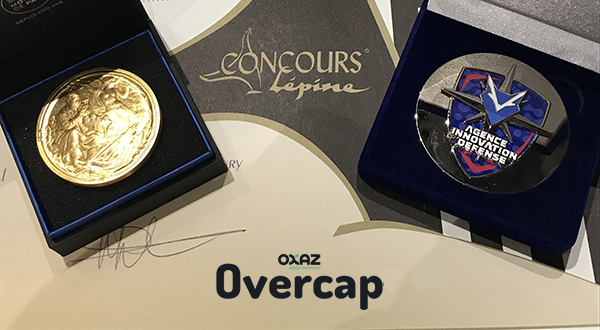Overcap received two medals at the Concours Lépine International Paris. This double reward is unusual in this prestigious competition! The founder of Oxaz shares his experience with us on the long journey of creating this all-season hood that revolutionizes weather protection.
A personal experience
“Since he was little, he has spent hours outside observing little animals” is one of the sentences that my mother regularly said about me. It is true that I spent time in the garden, climbing the old willow to read a good book and listening to the birds, lying down in the grass to follow the eager activities of the ants, the bees and other insects, to contemplate the details of a bark or a leaf…
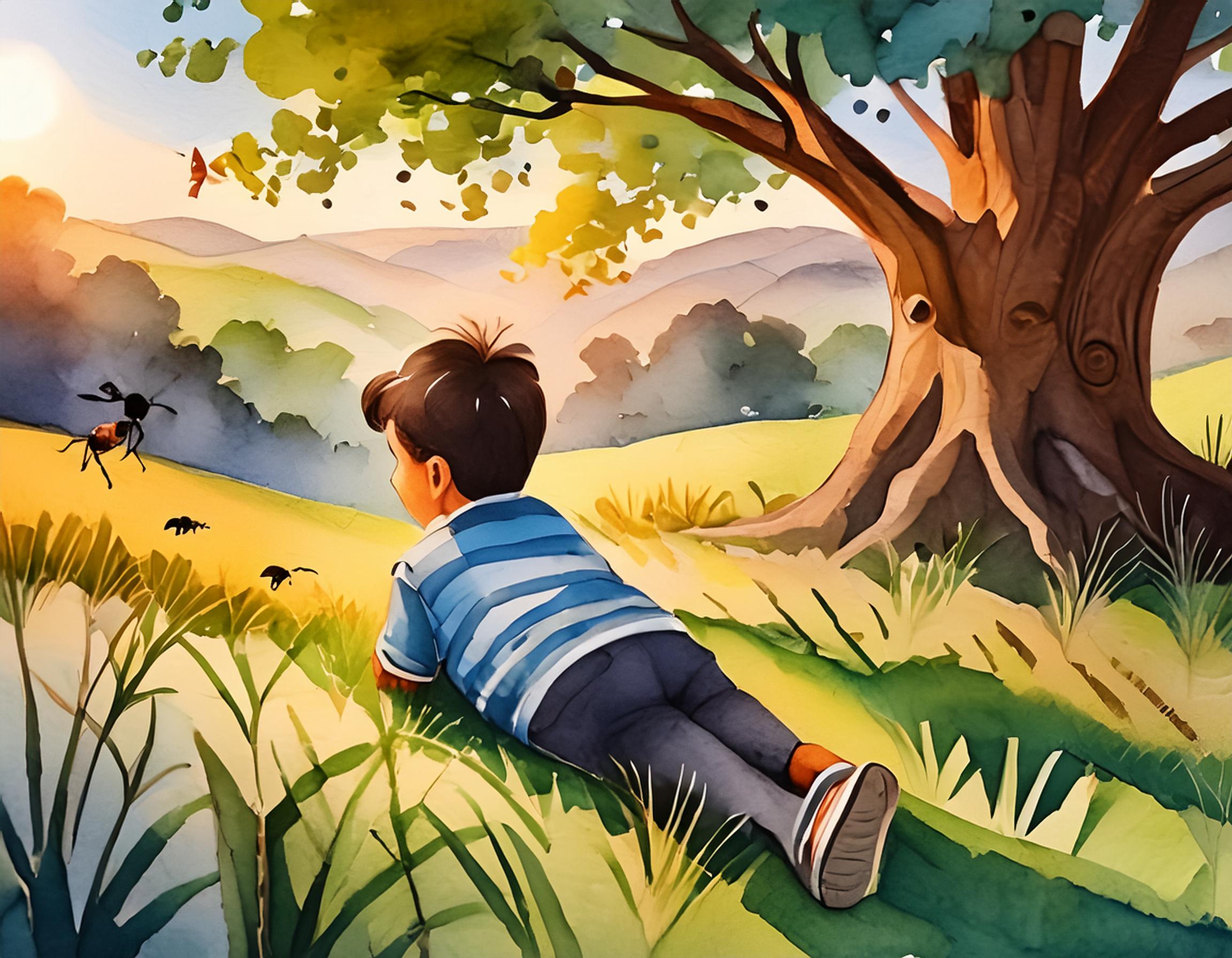
I still spend time outside today whenever I can, especially in the summer in the mountains with my little family. We hike early in the morning to enjoy nature in complete tranquility, respecting the silence of waking nature. The conditions are conducive to observations, discoveries and wonderful encounters.
However, the weather is not always good and can turn an outing into an uncomfortable or even painful session. One summer day in 2012, in the Alps, the weather deteriorated quickly and we had to take out the famous rain jackets. However, there were still two hours of walking before finishing our loop. The rain got heavier little by little, the wind got involved.
This is where we found once again that hoods are neither practical nor comfortable! As it was windy, we held the hoods tight against our heads so that they wouldn’t blow away. Result: the feeling of being a piece of meat wrapped in cellophane… Some of us struggled to keep the hood from falling over our eyes with every movement of the head… Unprotected, our faces were soaked and our glasses had become a blurry screen… The friction of the fabric against the head and ears made it impossible to discuss without raising your voice. The youngest got fed up long before the end and wanted to go home. Do you get the picture?
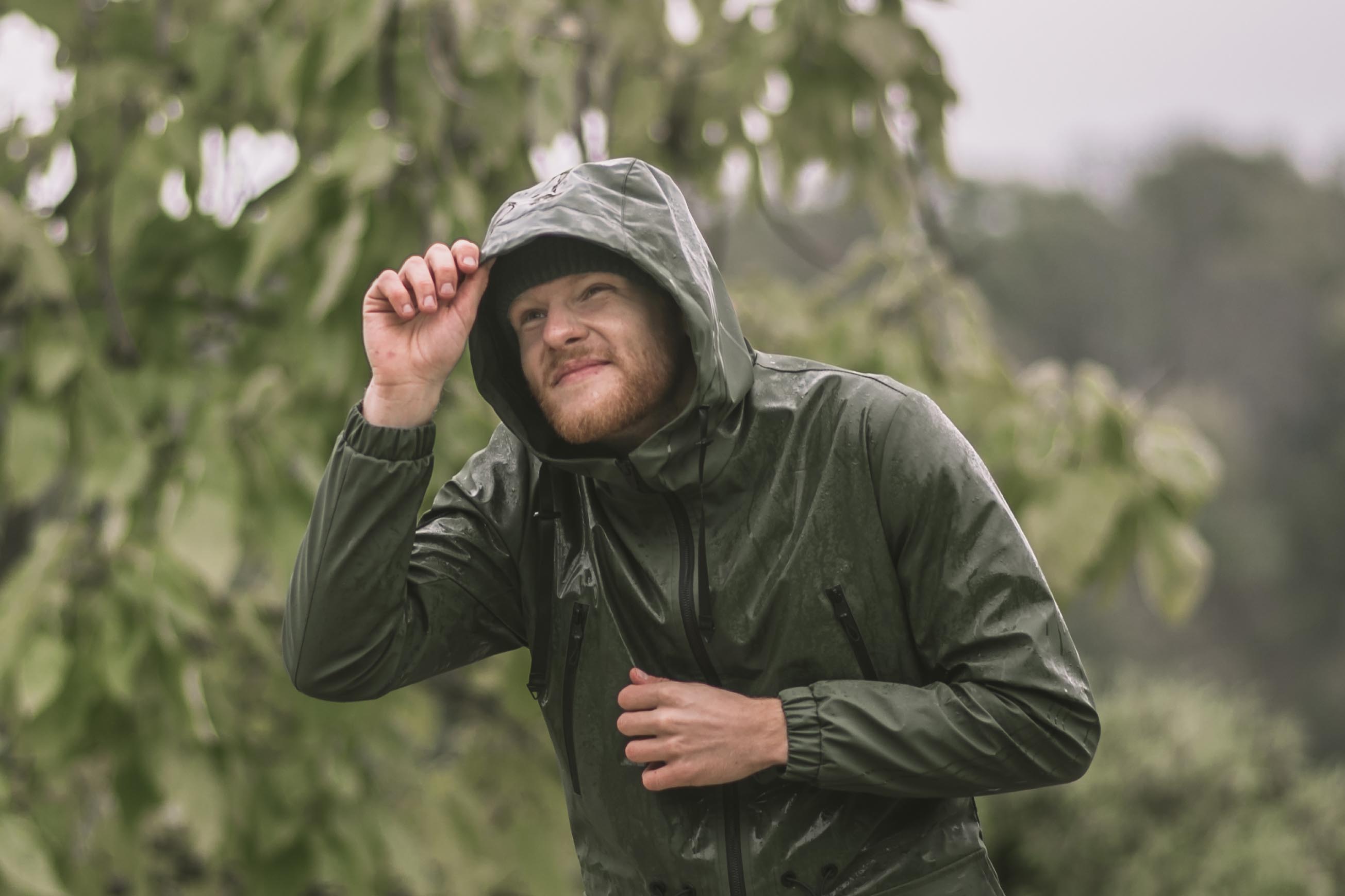
My partner then told me “an umbrella provides better protection but it’s not practical either. You are a designer, couldn’t you create an ‘umbrella without hands’? “. I didn’t react immediately but I couldn’t help but think about it…
In reality, the hood is used as a last resort. We’ll get it out as late as possible. We use it with the idea that it will be temporary, while waiting for the bad weather to pass. It is not a real protective accessory designed to be truly practical and comfortable. We can’t really imagine using it over time. This is a bit of a feature “forgotten” by clothing brands.
Finally, the hood hasn’t evolved in years… So it’s an area of potential creativity to investigate!
The inspiration
Before looking for a solution, I looked for the root of the problem. Why is the hood not practical or comfortable? Why can’t we see to the sides when we turn our heads? Why does it fly away so easily? Why do we have to tighten it tightly on the head to limit this? Why can we no longer hear the surrounding noises? Why do we have this feeling of suffocation?
The answer is that the hood touches the head, while the umbrella does not. But the umbrella doesn’t stand on its own, you need a hand to hold it. And the hood fits – just about well – precisely because it touches the head.
So, it would be wise if the hood does not touch the head. But it would have to be held by something other than the hand or the head. How to do it, is there a solution?
Passionate about nature, I know about biomimicry and I admire solutions based on nature. The Japanese Shinkansen train inspired by the head of the kingfisher, Velcro inspired by the traveling Madder plant, water-repellent coatings inspired by the Lotus leaf, etc. So I wanted to know how nature protects itself, physically and mechanically. How does it behave in the face of bad weather, whether rain, wind or even the blazing sun?
I managed to list a certain number of “biological strategies” implemented by animals or plants. A simple example: the armadillo and the woodlice use a shell that is both hard and robust but which folds up compactly. As another example, some desert ants have tiny hairs on their bodies that deflect the sun’s rays. Desert snails have a dual strategy. They maintain an insulating air pocket between their body and the wall of their shell most exposed to heat. In addition, the light color and rounded shape of their shell deflect the harsh rays of the sun, wind and rain.
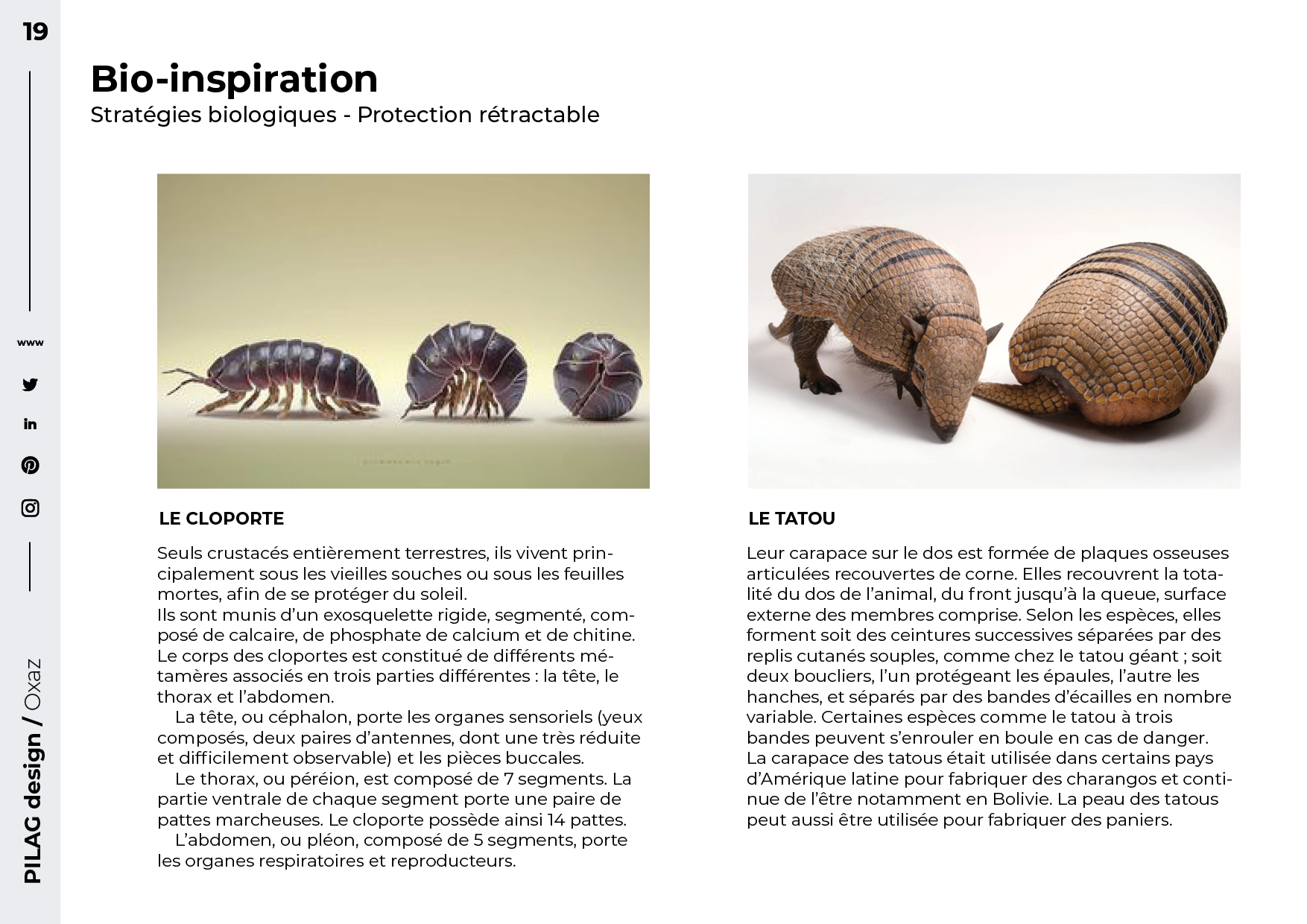
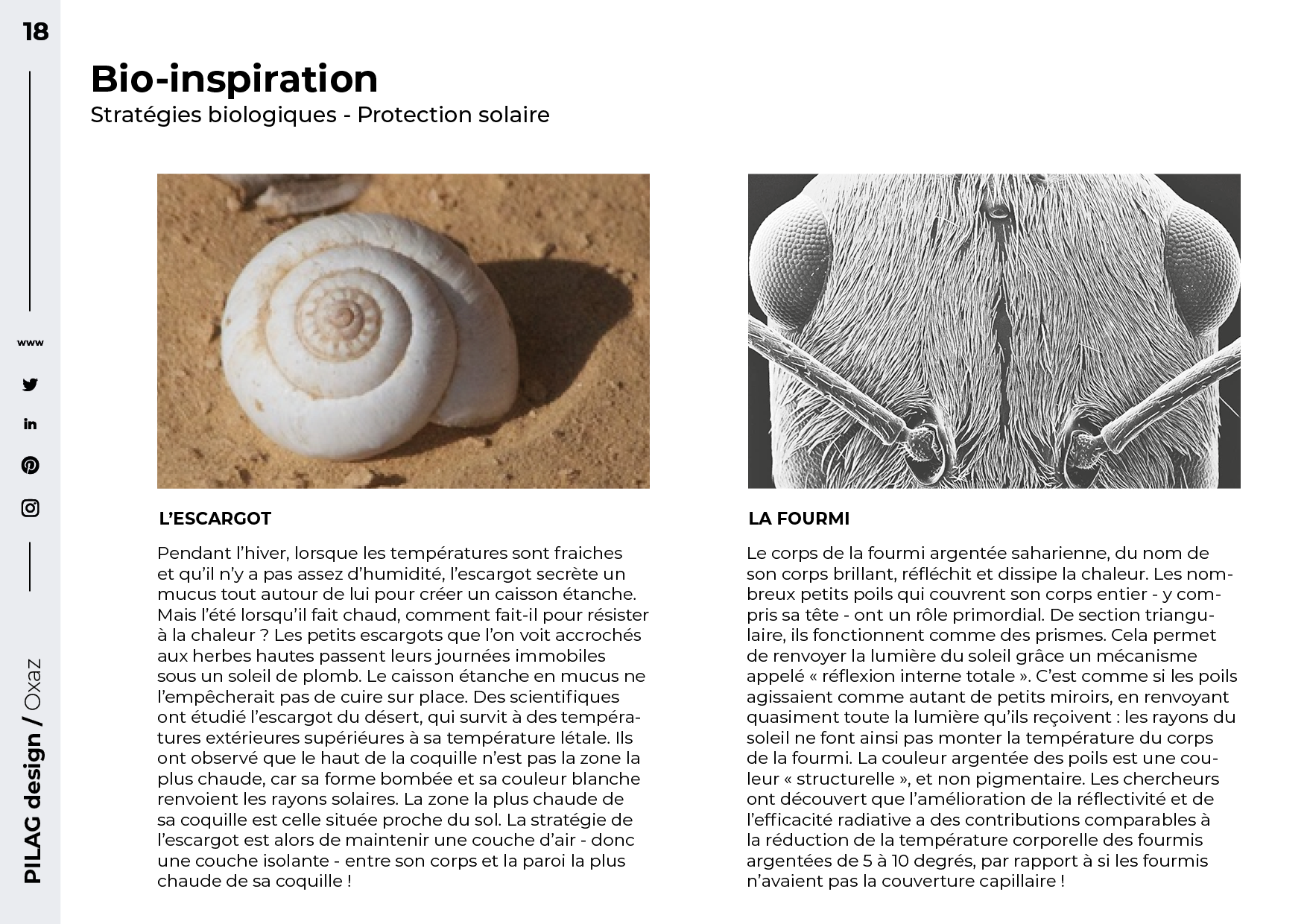
The first concept
From this documentary base, a sort of vague concept began to emerge. A shell, a carapace…
I also looked into what weather protection was currently used for outdoor activities. My research covered all life situations. One accessory ended up catching my attention: the hood of the children’s strollers. Its appearance resembles that of a shell. Its existence shows that there is a proven technical and industrial solution, for simple handling – a user experience.
A solution has emerged: transposing the stroller hood for an adult’s head allows you to create a protective “shell” and a layer of air around the head, without touching it! This hood rests on the sides of the head, therefore… on the shoulders of the user. But how to attach it to the shoulders? Via straps… but there are already straps on… backpacks!
A first drawing, a first diagram allows me to quickly see contradictory constraints. The hood must deploy with a circular movement, otherwise the solution will not be easily industrializable and will be expensive. But so that the hood can be deployed from the shoulders without touching the head, it must be a minimum size. This minimum diameter, which depends on the height of the head, the height of the neck, etc., is approximately 70 cm, or the width of the shoulders. However, backpack straps press on the inside of the shoulders and not the outside. So this doesn’t work…
So, for the hood to be smaller and pass over the head, its axis of rotation must be located higher, at ear level. That’s it ! You need to add a booster, something that keeps the axis of rotation there! The first concept was born!
I immediately created a model using wire from a leftover fence from the garden, in my kitchen (the garage will be for the second model 😉). My partner Pauline very roughly sewed a piece of old bedspread on it. The result was… very ugly, but showed that it could work!
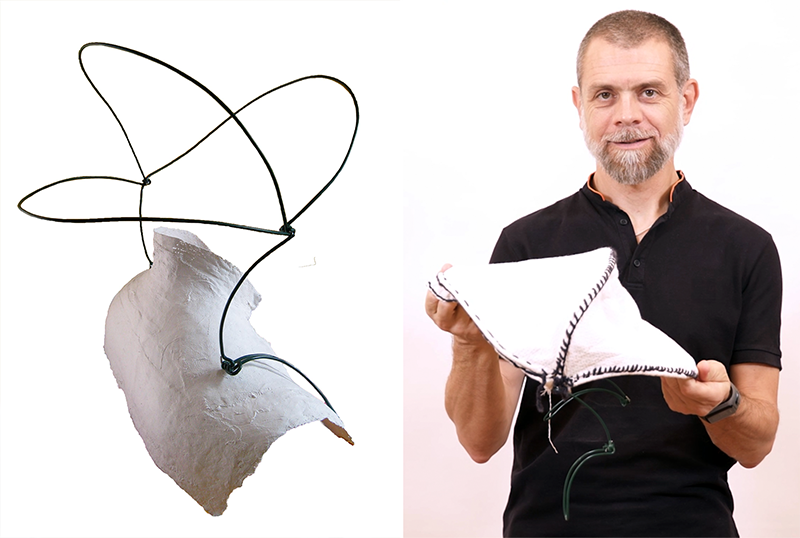
And the competition?
First reflex before going any further: look to see if there is already a product that solves the problem, an alternative hood, or another accessory. Indeed, as the saying goes “all ideas are in the air”: if you have an idea for a solution to a problem, there is necessarily someone else in the world who has had the same problem. and who came up with a solution.
Access to knowledge is easy today, there are search engines on the internet. There are also the search engines of international intellectual property organizations. Patent, trademark and design filings are accessible to the general public, worldwide.
After hours of research, bingo! I found around fifteen patents, based on the same observation and with concepts similar to mine! Some registered patents even date from the beginning of the 20th century! In 1908 in France, in 1931 in the USA… Patatras, it was the end of beans…
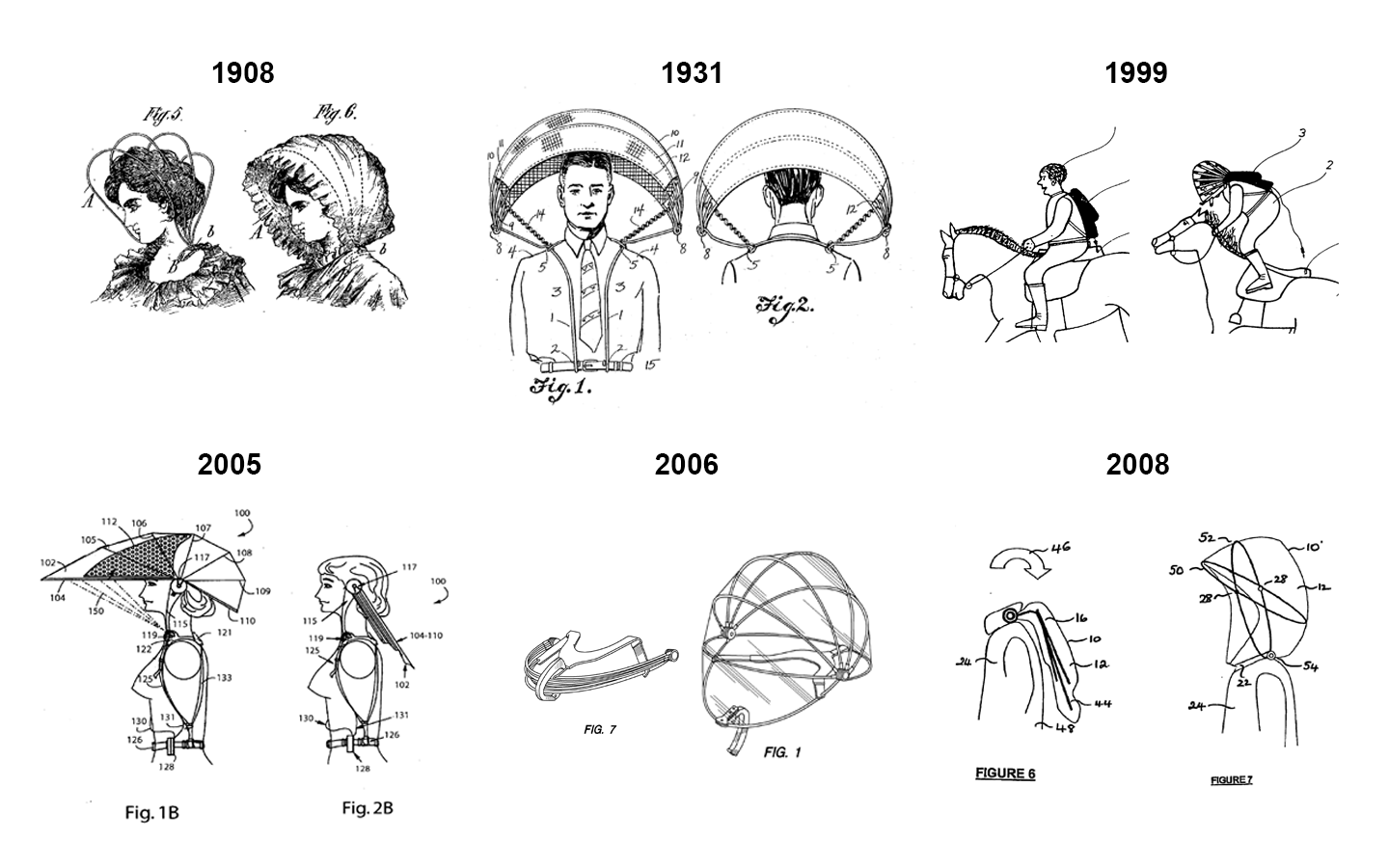
… or not ! Once the shock and disappointment had passed, I analyzed the patents and their claims.
I realized that none of the patented technical solutions leave the back free when the hood is folded: first good news! Furthermore, none of these concepts integrate the booster system as I imagined it. Second good news! After confirmation with an intellectual property expert, I concluded that my concept was not dead!
A market?
Before embarking on product design, it is important to verify that the concept is not just a personal need.
Do other people share the same need? Does the solution fit into a potential market likely to generate sufficiently large and profitable commercial activity? Which target would be interested in the product?
Confirmation came from the quantitative study carried out by consultant Sylvain Ballester with a few hundred hikers.
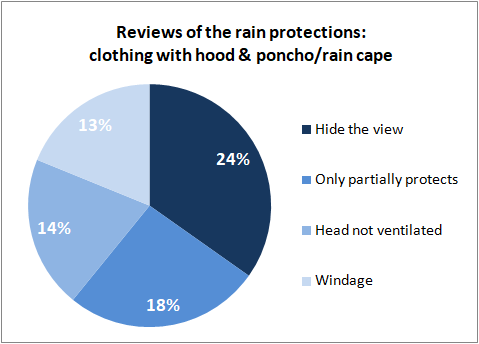
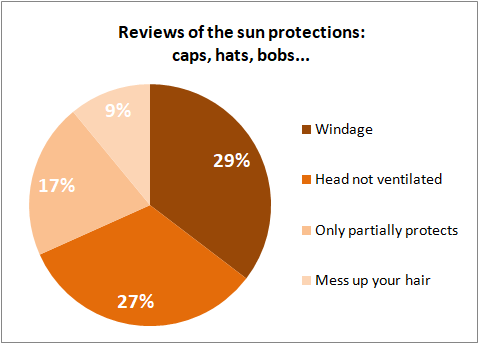
Prototyping and product development
In my spare time, certain evenings or weekends, I began to create successive models of the concept. My partner and my mother (who has since passed away) helped me with textile sewing. I therefore tested different technical solutions on a whole bunch of functions resulting from an initial functional analysis.
How to attach the hood to the straps of a backpack? How to deploy the hood? How to raise your pivot point? How to lock the hood in the open position? How can we ensure that everything stays in place so that it does not touch the head? What shape should you give to the hoops? What form should we give to the whole?
I quite quickly reached my limits in textile manufacturing and sought expertise in prototyping. I met Patrick Mainguené, founder of the ECTOR brand of eco-responsible shoes made in France. He agreed to make some prototypes.
Then he put me in touch with Céline Morel, a professional prototypist specializing in outdoor clothing and accessories, particularly backpacks. A two-year collaboration then began and the models became prototypes. A good ten prototypes were made and around a hundred of tests were carried out over numerous iterations. Indeed, an additional difficulty for the design of this product is the absence of a reference. There was no existing product from which it was possible to draw inspiration, both in terms of shape, dimensions and technical solutions. Everything had to be invented. So, after having modified a detail or a dimension on one side of the product, we realize that on the other side of the product it no longer works!
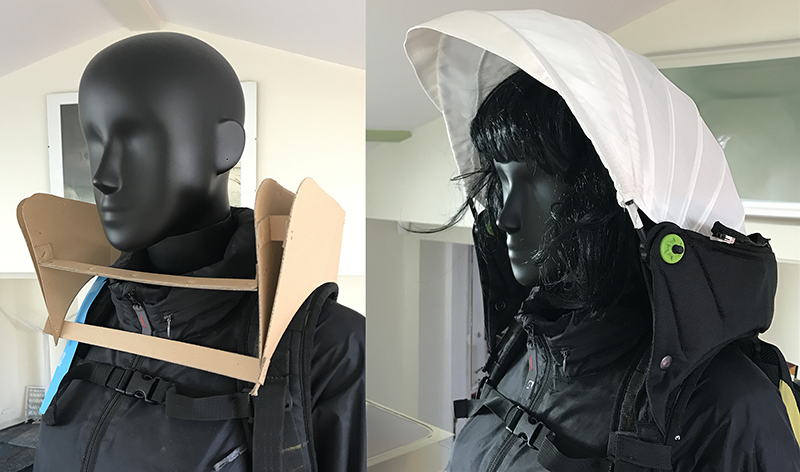
So, we prototype, we test, we modify, we prototype, we test, we modify, etc. This is a typical designer methodology! Moreover, one of the iterations was carried out in collaboration with the designer Maxime Blanco, my partner at the time within Studio Pilag.
Little by little, through iterations, the concept began to resemble something closer and closer to a “product”!
Still far from the Lépine Competition!
At this stage, I was still far from a viable product, I had not yet found the name of what became the Overcap hood. I never even imagined one day applying for the Concours Lépine in Paris !
In order to continue the project, I sought support. Indeed, a project such as this requires specific expertise that no one can possess all on their own. Innovation marketing, commercial strategy, fundraising are expertise that I needed. I had no idea that a second mountain to climb awaited me. But that’s another story, which I will tell in a second episode!
End of the first part of this article on the long road to Concours Lépine
The second part will be published in 15 days. See you soon!

